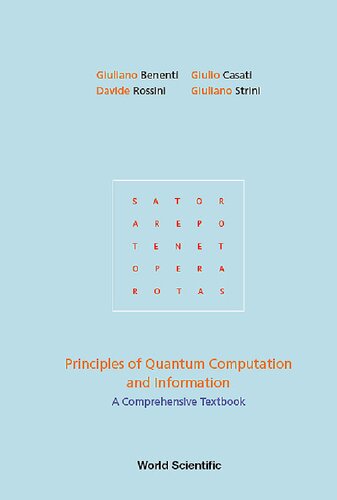

Most ebook files are in PDF format, so you can easily read them using various software such as Foxit Reader or directly on the Google Chrome browser.
Some ebook files are released by publishers in other formats such as .awz, .mobi, .epub, .fb2, etc. You may need to install specific software to read these formats on mobile/PC, such as Calibre.
Please read the tutorial at this link. https://ebooknice.com/page/post?id=faq
We offer FREE conversion to the popular formats you request; however, this may take some time. Therefore, right after payment, please email us, and we will try to provide the service as quickly as possible.
For some exceptional file formats or broken links (if any), please refrain from opening any disputes. Instead, email us first, and we will try to assist within a maximum of 6 hours.
EbookNice Team

Status:
Available0.0
0 reviews Various important aspects of quantum computation and information are covered in depth, starting from the foundations (the basic concepts of computational complexity, energy, entropy, and information, quantum superposition and entanglement, elementary quantum gates, the main quantum algorithms, quantum teleportation, and quantum cryptography) up to advanced topics (like entanglement measures, quantum discord, quantum noise, quantum channels, quantum error correction, quantum simulators and tensor networks).
It can be used as a broad range textbook for a course in quantum information and computation, both for upper-level undergraduate students and for graduate students. It contains a large number of solved exercises, which are an essential complement to the text, as they will help the student to become familiar with the subject. The book may also be useful as general education for readers who want to know the fundamental principles of quantum information and computation and who have the basic background acquired from their undergraduate course in physics, mathematics, or computer science, as well as for researchers interested in some of the latest spin-off of the field, including the use of quantum information in the theories of many-body systems.
Readership: Upper-level undergraduates and graduate students in physics, mathematics and computer science.